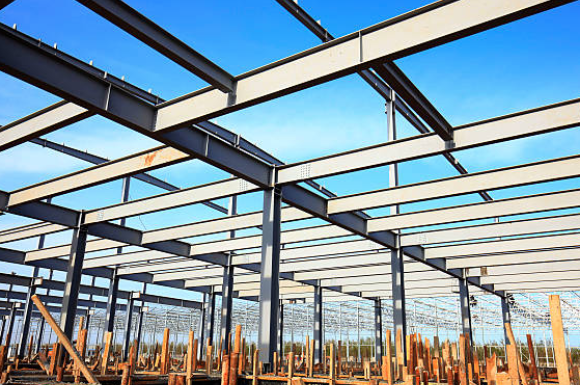
Posted on Wednesday, October 9, 2024
In metal building construction, purlins and girts are crucial components that provide essential horizontal support between structural columns. These elements play a significant role in the overall stability and strength of metal structures, making them integral to the design and functionality of any metal building.
Purlins are horizontal members that support the roof sheeting, while girts serve a similar purpose for wall panels. By connecting vertical columns, these components help distribute loads evenly across the structure, preventing excessive bending or deformation. This connection is vital for maintaining the structural integrity of the building, especially under various loads such as snow, wind, and seismic activity.
The use of purlins and girts also contributes to the building's overall energy efficiency. They can provide a framework for insulation, reducing heat transfer and improving climate control within the structure. Additionally, these components can facilitate the attachment of external elements like siding, roofing, and equipment, further enhancing the building's utility.
The manufacturing of purlins and girts involves several techniques, each impacting the overall strength and durability of the final product:
The choice of manufacturing technique for purlins and girts directly affects the strength and durability of a metal building. Factors such as material thickness, profile shape, and the presence of protective coatings (e.g., galvanization) are critical in ensuring these components can withstand environmental stresses over time.
Furthermore, the proper installation and alignment of purlins and girts during construction are vital for maximizing their effectiveness. Engineers must carefully consider load paths and structural connections to ensure the entire system functions cohesively.
Purlins and girts are essential components in metal building design, providing critical horizontal support and enhancing the overall strength and stability of the structure. The manufacturing techniques used to create these components, including roll forming, cold-forming, welding, and hot-rolling, play a significant role in determining their performance. Understanding the importance of these elements can help architects, engineers, and builders design safer, more efficient metal buildings that meet the needs of their occupants and withstand the test of time.

Understanding Coil IDs, Mandrel Sizing, and Shear Pin Safety in Uncoilers
Posted on Wednesday, October 1, 2025
Mismatched sizes can lead to machine damage, downtime, and safety hazards — often evidenced by a shear pin failure.

How Coil Tensile Strength Affects Roll Forming and How to Adjust Your Machine
Posted on Wednesday, October 1, 2025
Changes in tensile strength can significantly affect the finished profile, causing misaligned bends, uneven edges, and out-of-spec parts.

Why Paint Cracks on an Embossing Line Running Pre-Painted Coil and How to Prevent It
Posted on Wednesday, October 1, 2025
This issue not only affects the visual quality of the product but can also lead to increased scrap rates and customer complaints.

The Most Popular Standing Seam Metal Roof Panels in the U.S. — A Comprehensive Guide
Posted on Monday, September 29, 2025
In this post, we’ll explore what panel styles and sizes are most popular in the U.S